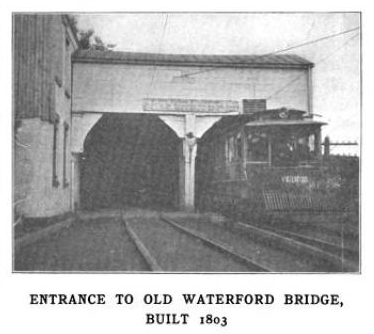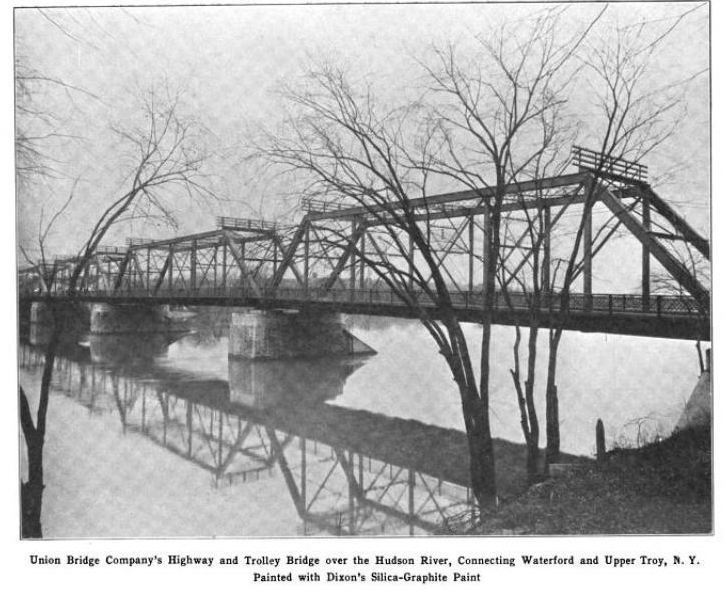It’s back-to-school week, so we’re all thinking of school supplies, which means we’re all thinking of Dixon Ticonderoga pencils, whose graphite originally came from the historic town on Lake Champlain. But Dixon didn’t just make pencils; another example of his handiwork could be found on a painted bridge many miles south of Ticonderoga, in Waterford.
Paging through “Graphite” magazine, as Hoxsie is wont to do, we find this account of the Waterford bridge:
On July 10, 1909, “fire destroyed the Burr Bridge, which was the longest wooden bridge in America. It was a four-span structure with a total length of about 750 feet, and was built in 1803. At the time of its destruction, this wooden bridge was in excellent condition. It is this noted structure that the present Waterford Bridge replaces.
Boller & Hodge, of New York City, were the consulting engineers and the steel work was fabricated and erected by the Phoenix Bridge Company of Phoenixville, Pa., and painted by Mr. George MacLaurin, contracting painter, of Philadelphia. The structure is now owned by the Union Bridge Company, Mr. Thomas A Knickerbacher, president, through whose courtesy we are able to reproduce the photograph.

Why was the Joseph Dixon Crucible Company of Jersey City, New Jersey, publisher of the more-than-somewhat self-promoting “Graphite” magazine, interested in the new Union Bridge the connected (and still connects) Waterford to Lansingburgh? Because George MacLaurin wasn’t spraying just any old concoction over that new steel highway and trolley bridge – he was using Dixon’s Silica-Graphite Paint.
Joseph Dixon produced the first pencil made in the United States, which came to be known as the Dixon Ticonderoga, but that was only the beginning of his empire. He designed a mirror in a camera that presaged the viewfinder, and as a printer developed a method of printing banknotes that would prevent counterfeiting. He patented a double-crank steam engine and a method of tunneling under water. But it was graphite that captured Dixon’s imagination, and it seemed there was nothing it couldn’t do. He used it in stove polish and lubricants, foundry facings, brake linings, oilfree bearings, non-corrosive paint, and graphite crucibles for melting metals. And pencils. Ticonderoga, once the most recognizable pencil brand, was the source of the graphite, from very pure ores on Lead Mountain. American Graphite was the first company to make the Ticonderoga pencil, but eventually the company was Dixon’s.
Silica graphite paint was prized for its resistance to corrosion, used on bridges, gas holders, and other high-stress applications. Dixon’s promotion of the use of his paint on the new bridge was also an excuse to present us with a rare picture of the Burr bridge, and to fail to understand the fancy ‘s’ in signpainting and to relate that “The curious old sign above ad to the left of the trolley car reads: ‘One dollar penalty for paffing this bridge fafter than on a walk by any Perfon or Perfons, riding or driving any Horfe or carriage.”

Click here for the original page with pictures of the old and new bridges.
Originally published June 18, 2012.
